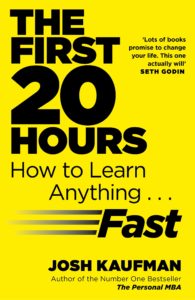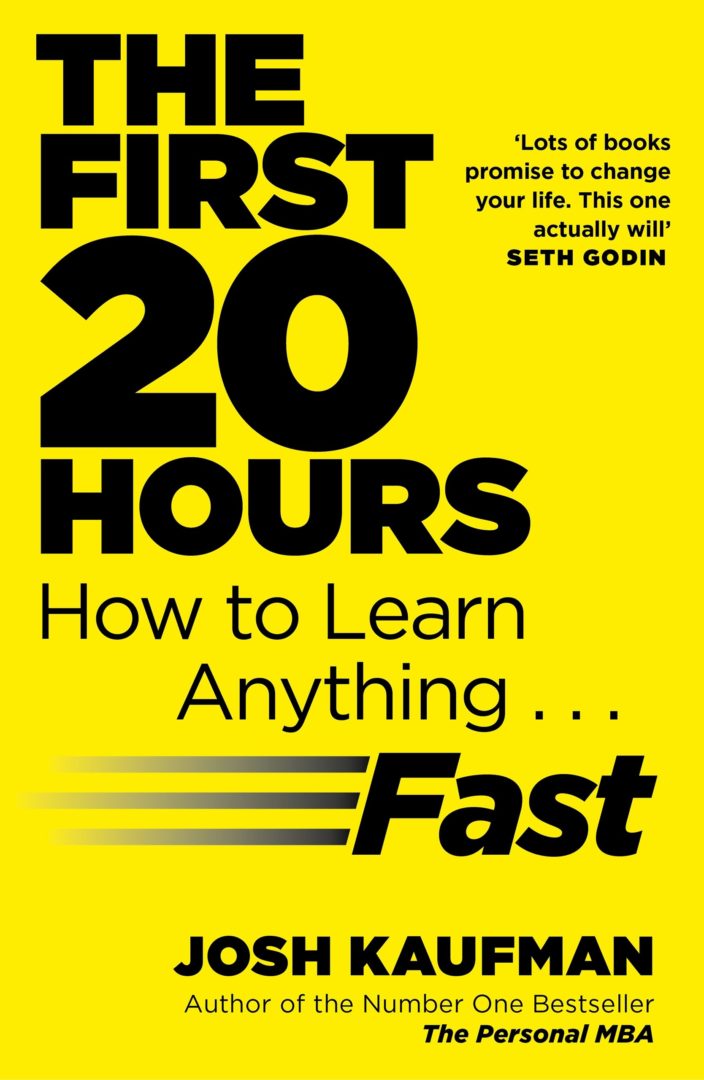
“There’s so much I want to do… and so little time.”
Our world is full of so many things to do and a variety of interesting things to learn about, and it is part of natural instinct to try to satisfy our curiosity and our appetite for knowledge. Yet, whenever we set out to learn something, like a new language, we rarely do get to accomplish our goal, for two main reasons. Trying to fit learning a new skill within our routine of academics and various other chores is usually difficult, and is the main obstacle. Also, people usually give up learning a skill when they put in a lot effort and notice a lack of progress. For example, some people get frustrated during the first stages of learning a language as they spend a lot of time learning grammar and vocabulary, yet struggle to put a few words together, leading them to abandon their task.
What if there was a way to learn a new skill with less pain and frustration, a versatile set of rules that can be applied to learning any skill. Wouldn’t it be nice if you can play that sport or you were interested in, or play that instrument that you always loved? The bestselling author Josh Kaufman attempts to give us a guideline on how to accomplish our goals in his book “ The First 20 Hours, How to Learn Anything… Fast”.

Consider the graph above; the widely known learning curve. It shows that as you start learning a new skill, you naturally improve in a short period of time. This means if you invest your undivided attention for a short amount of time in a new skill, you quickly improve and overcome the period of frustration that comes with learning new skills. With that idea in mind, here are the 10 most important principles of rapid skill acquisition according to Josh Kaufman.
1- Choose a lovable project : This is arguably the most important principle as it is will be the engine that keeps you going. When choosing a new skill to learn, think about why you want to do it. How is important to you? How will it help you later on? The more important learning a skill is to you, the more willing you would be to invest time in it.
2- Focus your energy on one skill at a time: The key to making your learning curve as steep as possible is to focus only on one skill at a time. This will help you get past the frustration period as quickly as possible.
3- Define your target performance level: Think about why you want to learn the skill and identify a certain level you want to be at. This helps to better motivate you to keep practicing as your goal is better defined.
4- Deconstruct the skill into subskills: If you for example, want to learn how to play football, there are several subskills to consider; passing, dribbling, shooting, positioning, fitness, etc. Identify the critical subskills and focus on them, which will allow you to progress faster with less effort.
5- Obtain critical tools: If you want to learn how to play tennis, you need to make sure you have a good quality racket, the right shoes and the appropriate clothing. This helps you save precious time towards learning a skill.
6- Eliminate barriers to practice: Make sure that your environment is set up in such a way that it allows you to efficiently learn a skill. For example, if you are studying for an exam, make sure to keep your phone away so you can focus.
7- Make dedicated time for practice: You have 24 hours a day only, so you must make use of every second of this time. Plan your day out to get a period of time where you can practice your skill without any distractions.
8- Create fast feedback loops: You need to find a way to get information on how well you are performing, usually from a more experienced person that practices this skill, but this depends on the skill.
9- Practice by the clock in short bursts: Set a timer for a short period of time, possibly 30 minutes, and practice from the start to the end of this time. This method will help ensure that you complete periods of sustained practice.
10- Quantity and speed are key: The more and the faster you practice, the quicker you will advance up that learning curve. This does not mean you should not ignore your technique, but you must find a balance between technique, quantity and speed for to get the most efficient learning process.
These principles can be applied to any skill and if you follow these principles well, you will make good progress in any skill. The key is to focus on the first principle, find your motive to practice your chosen skill as it will allow you to proceed to follow the next 9 principles.
If you’d like learn more, watch this TED talk where the author goes into more detail about this book.


